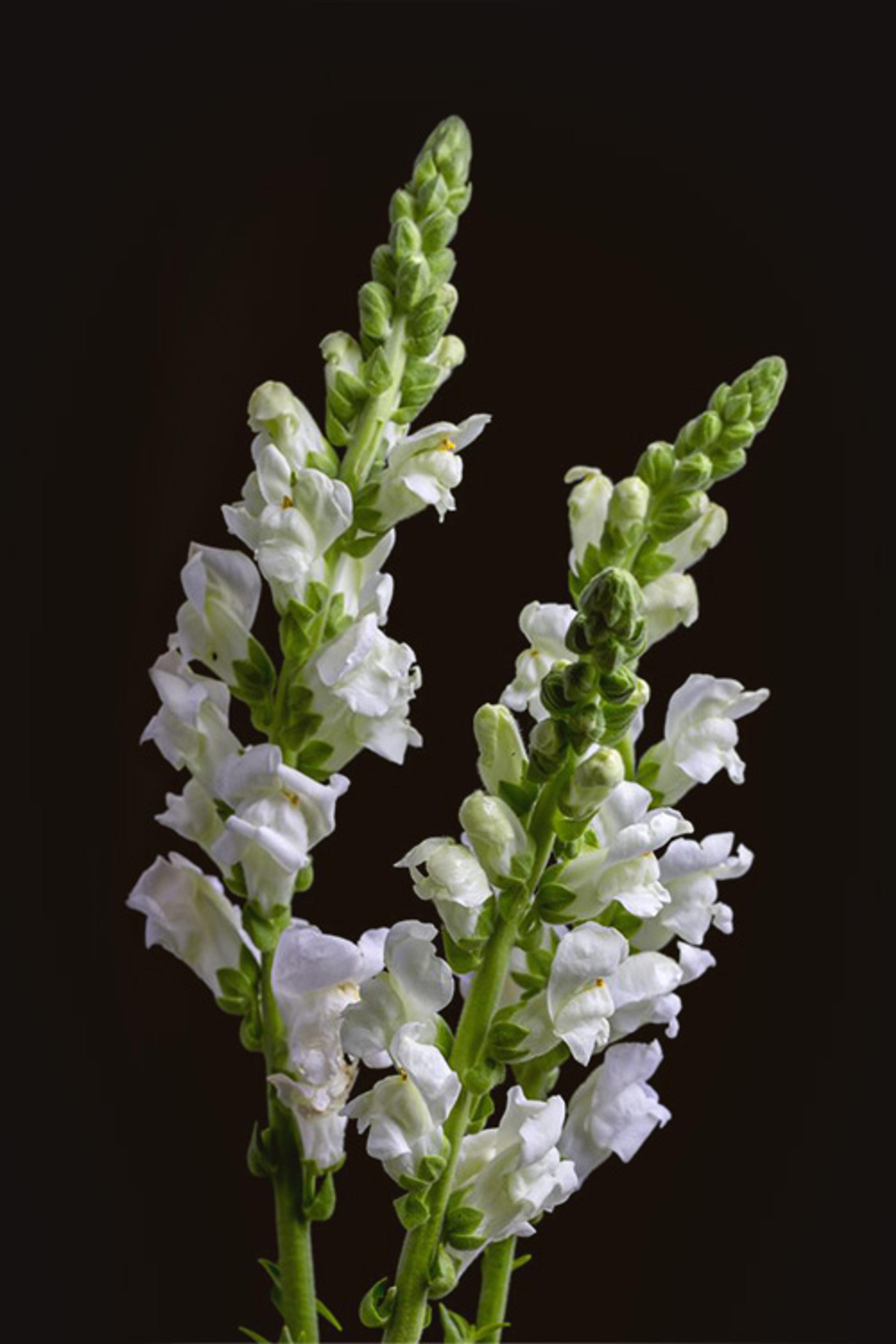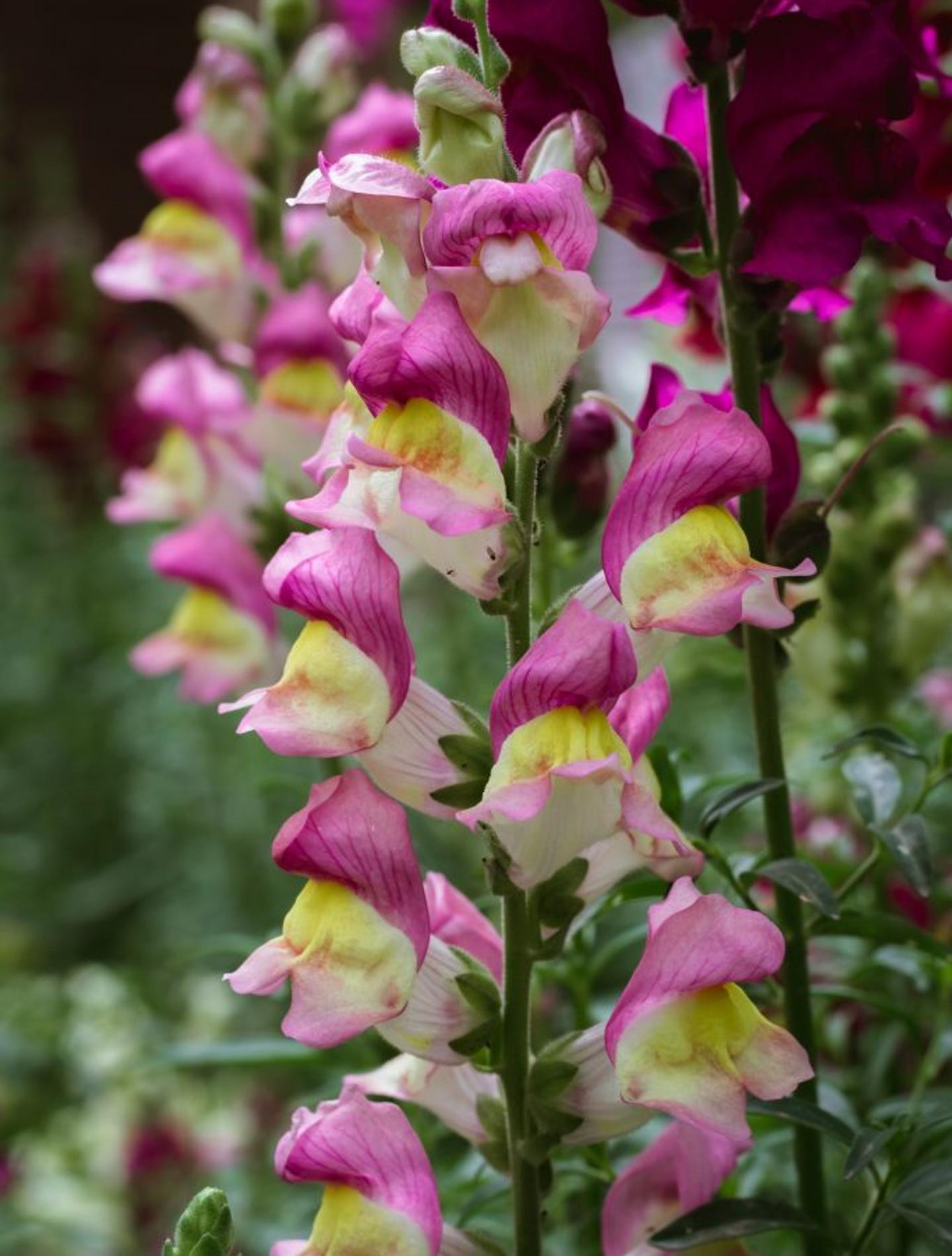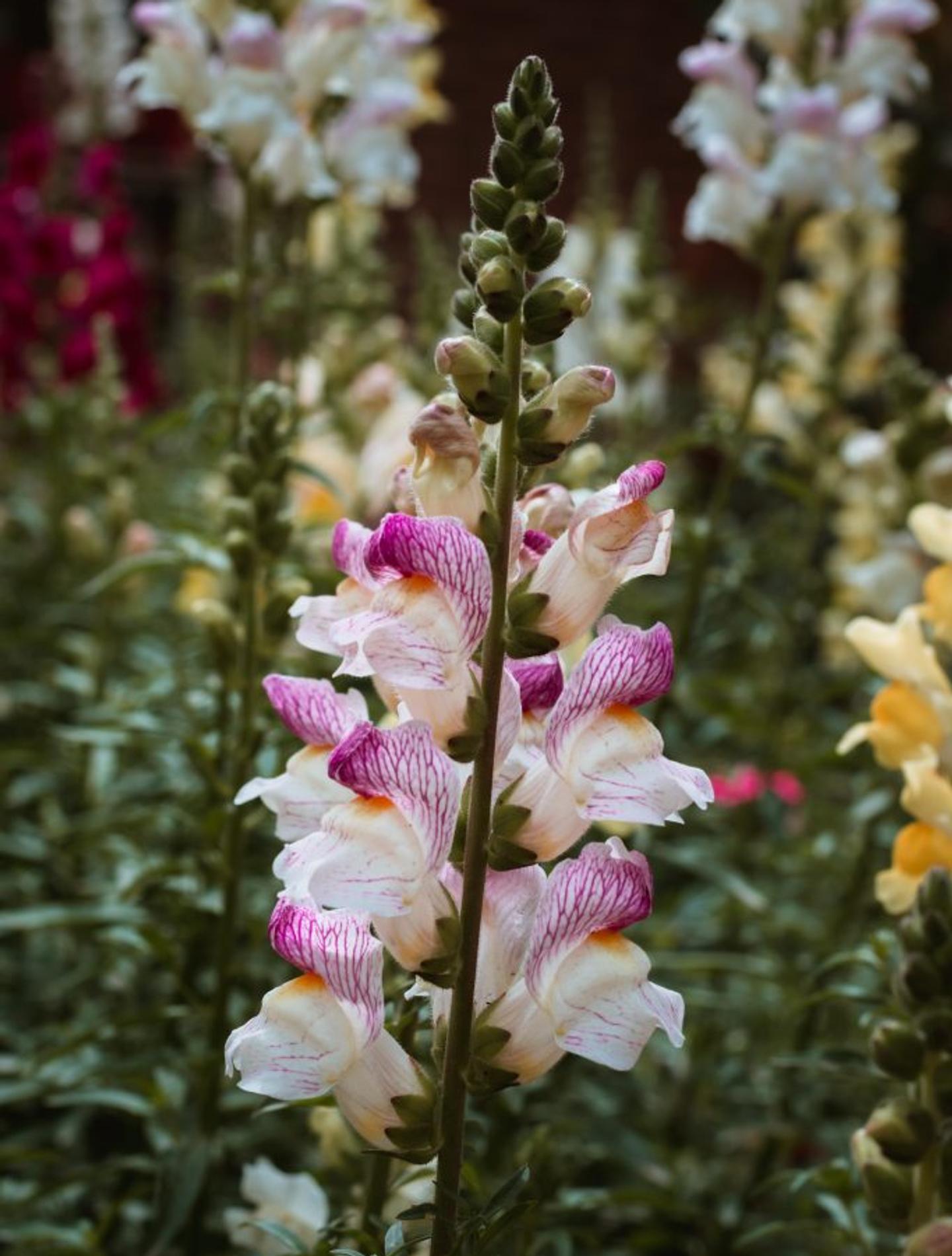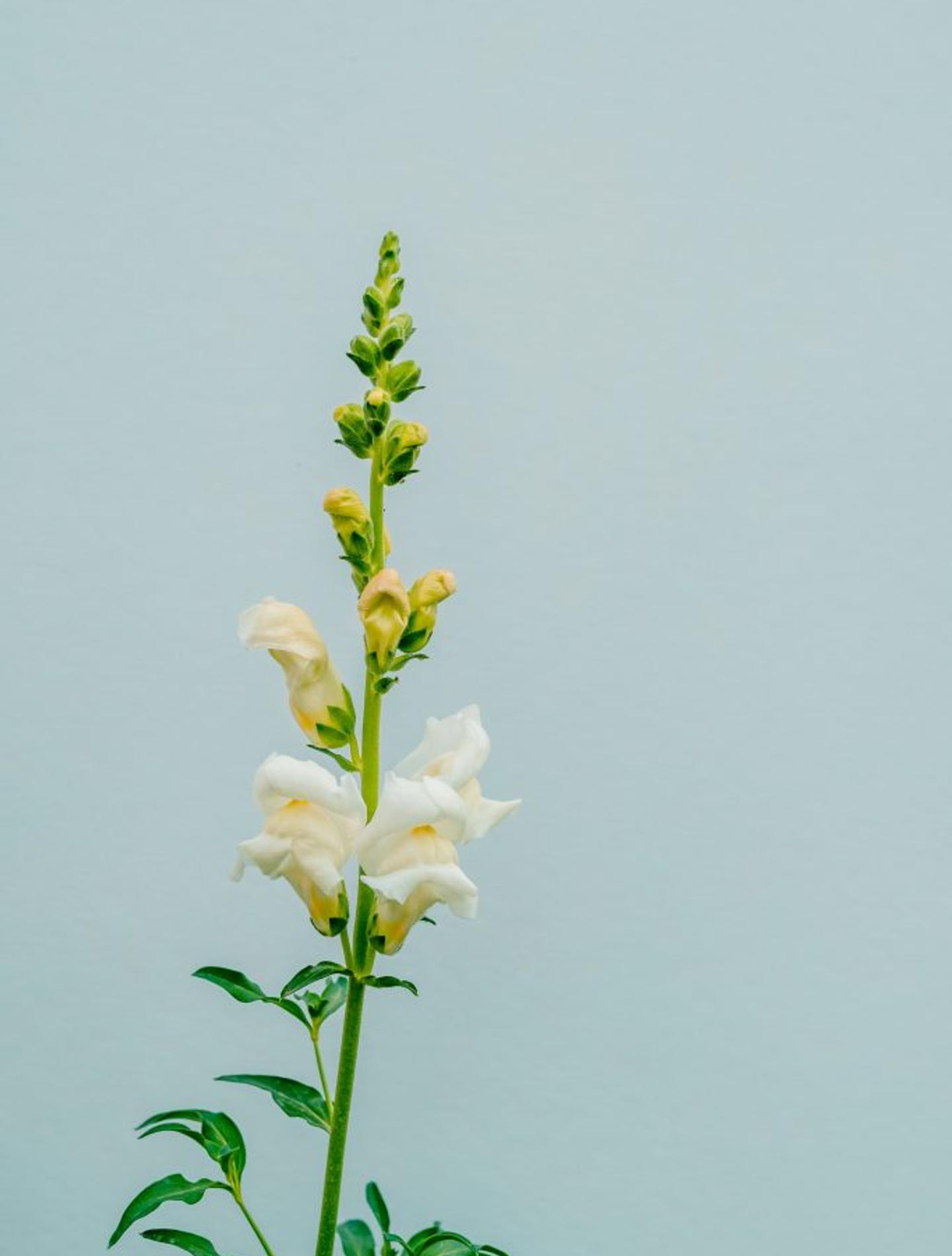Flower Meanings
Snapdragon


The Meaning of Snapdragons
The first question you probably have is, “Why dragons?”. Also called Dragon Plant, if you gently squeeze the snapdragon’s blooms, they’ll take the shape of a dragon’s head. Yup, that’s it!
If your second question has anything to do with what these blooms symbolize, the snapdragon has two primary meanings.
- Grace and, due to its growth in rocky areas, strength.
- Deviousness
Hmm, an interesting combination, right?
Snaps’ genus name Antirrhinums is derived from the Greek word “antirrhinon” which means “nose-like.” The Greeks also called it “kynokephelon” which means “dog-headed.”
These blooms have been around for quite a while, before the day of the Roman Empire, to be specific. With that, they’ve become a solidified part of human mythology.
Since snaps are both a symbol of deception and grace – they have been used as a charm against falsehood throughout mythology.
In the Victorian era, messages from lovers were secretly sent through flowers (sound familiar?). A snapdragon in combination with a flower known for truth-telling, such as hyacinth, meant that the sender was sorry for whatever wrong they had previously done (or will do).
Snaps also symbolize grace, which we know, but grace specifically while under pressure or having inner strength in difficulty. [1]
Snapdragon Color Meanings
There are many flowers that have just one meaning, but the snapdragon has many meanings depending on its color. Here are just a few different colors and what their snapdragon color meaning is:
- Yellow snaps mean smiles, happiness, and overall good luck.
- Red snaps symbolize love, passion, and the gift of positive energy.
- White snaps symbolize purity, grace, innocence, and good magic.
- Purple snaps represent spirituality and magical mysteries. [1]
What Does Snapdragon Smell Like?
Snapdragon usually smells light and fruity—some have even compared their scent to bubblegum! [5]

"Season of woolen garments taken out of mothballs; of nocturnal mists and dew and slippery front steps, and late-blooming slugs; of snapdragons having one last fling…"
Margaret Atwood
The History of the Snapdragon
Snapdragons aren’t just fun to play with; what with their “dragon heads” and moving jaws, but they’re filled with history. Snaps originated in the Mediterranean region and southern Europe and have spread throughout the entire world over time! Pretty impressive, no?
They were first brought to America when colonists began to populate the US and plant them in gardens in just about every state.
They’re super easy to grow and were acknowledged as the Flower of the Year in 1994 by the US National Garden Bureau! Woo! Go snaps! Go snaps!
The Romans and Greeks believed that snaps had the power to protect them from witchcraft. Dioscorides, a Greek physician, wrote that protection would be given to anyone who wore snapdragons around their neck.
In Medieval times, these blooms were thought to be the guardians of European castles and were planted near the gates.
It is said that women also boiled snapdragons and applied the infusion to their faces to keep them young, fresh, and lovely.
Even Thomas Jefferson grew snaps in his garden back in the 1700s!
Today, we typically see three different types of snapdragon, including the dragon jaws, butterflies, and double azalea, all of which are hugely popular in gardens all over the world. [2]
DID YOU KNOW - Snapdragon Fun Fact
A few more names for the snapdragon include lion’s mouth, calf’s snout, and toad’s mouth…what’s with all the animal references!? [1]

How to Grow Snapdragons
Growing snapdragons in your flower beds will bring vibrant colors to cooler seasons of the year. Their height also provides a beautiful contrast when planted against a fence or with smaller blooms and shrubs.
Plant your snaps in a location that receives full sun and has well-draining soil. Taller varieties of snaps may also require stakes to keep them from drooping.
In the summer, when the flower begins to fade, clip the plant by one-third to one-half, and you can then expect more blooms come fall!
In terms of watering, keep your snaps soil moist for the first few weeks after planting. Once they’ve become established in their new home, continue to water them regularly. Give them about an inch of water per week (especially if rainfall is slight).
Pro tip: Water near the crown of the plant and avoid overhead watering to keep your snaps at their healthiest!
Allow the soil to dry about an inch deep before watering once you have yourself an established plant. [3]
DID YOU KNOW - Snapdragon Fun Fact
Snapdragons originated in southern Spain, North Africa and America. [1]

How to Care for Snapdragons
If you want to bring a few of your homegrown snapdragons inside or recently purchased a bunch from a local florist and want to keep them looking fresh and healthy for as long as possible, we have a few quick tips to follow:
- Snaps will do best when cut at their most hydrated state and put in water as soon as they’re cut.
- Cut them early in the day when the blooms are emerging.
- Cut your snaps at a 45-degree angle, just above the leaf node with sharp garden shears.
- Pinch of the foliage growing on the stem so no rouge leaves will be submerged in water (they will definitely get slimy and gross.)
- Place them in a vase with tepid water as soon as the leaves are removed.
- Place your vase of snaps in a spot where temperatures are between 65 and 75 degrees Fahrenheit for about one or two hours.
- Next, fill another clean vase about one-half to two/thirds full of cool water and add a bit of floral preservative.
- Remove the snaps one at a time from the water and cut about one inch from the bottom (again, at a 45-degree angle).
- Cut them under running warm water for best results.
- Place them back in the vase in a cool area away from direct sunlight, and enjoy! [4]
When to Send Snapdragons as a Gift
Since the snapdragon comes in so many different colors – some more spring-like and some fall oriented – they can actually be added to any bouquet for any occasion to add both depth and a vibrant pop of color!

References:
- 1 - Flower Meaning
- 2 - Garden Guides
- 3 - Gardening Know How
- 4 - Home Guides
- 5 - Hello Homestead
Flower Meanings — keep discovering

Protea
Native to Australia and South Africa, Protea are the epitome of unique and actually date back to prehistoric times!

Ranunculus
Arguably, one of the most beautiful blooms around—the ranunculus is a wedding-season favorite!

Rose
Roses, the world’s most popular flower, come in just about every color imaginable and express a vast range of emotions. Gardeners obsess over them, and even gas stations sell them. Break out the rose-colored reading glasses for a crash course in this iconic bloom.

Shamrock
Known for its Irish roots, there’s no doubt you’ll see shamrocks everywhere when St. Patrick’s Day comes around.

Protea
Native to Australia and South Africa, Protea are the epitome of unique and actually date back to prehistoric times!

Ranunculus
Arguably, one of the most beautiful blooms around—the ranunculus is a wedding-season favorite!

Rose
Roses, the world’s most popular flower, come in just about every color imaginable and express a vast range of emotions. Gardeners obsess over them, and even gas stations sell them. Break out the rose-colored reading glasses for a crash course in this iconic bloom.

Shamrock
Known for its Irish roots, there’s no doubt you’ll see shamrocks everywhere when St. Patrick’s Day comes around.
Ready to send beautiful flowers?
Our guided experience helps you send a one-of-a-kind arrangement perfect for every occasion.
Send Flowers